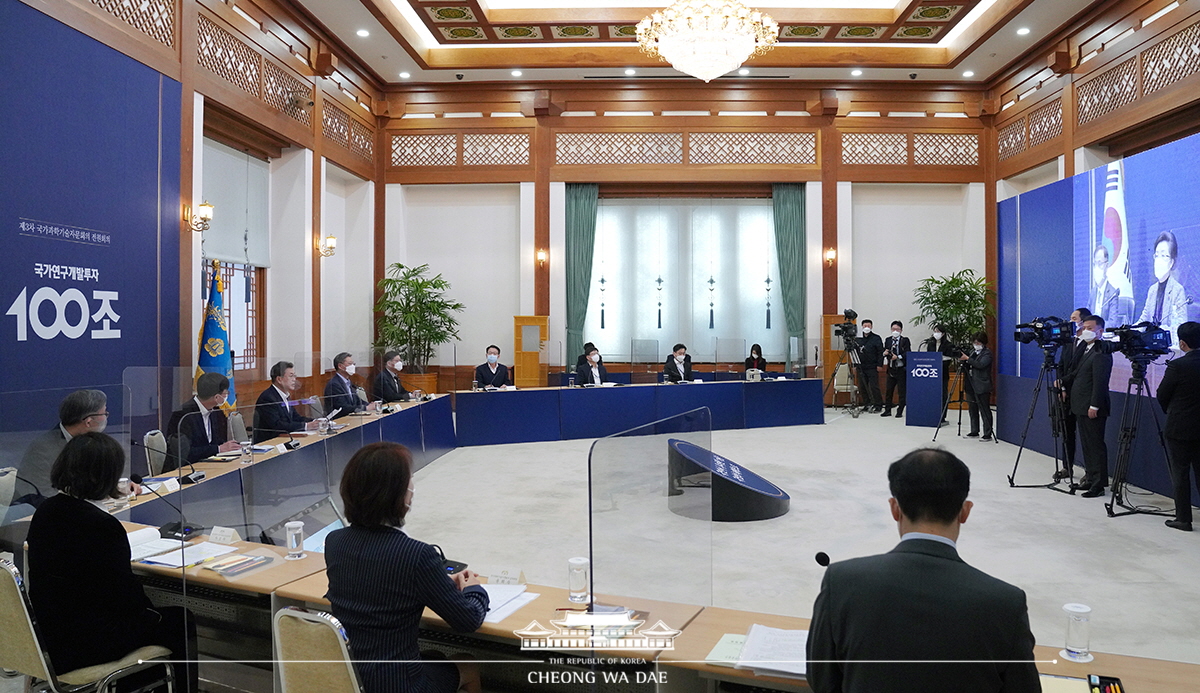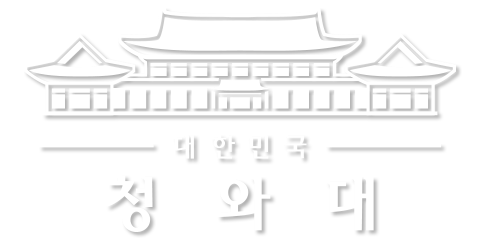이 웹사이트는 제19대 대통령 임기 종료에 따라 대통령기록관이 「대통령기록물 관리에 관한 법률」에 의해 이관받아 서비스하는 대통령기록물입니다. 자료의 열람만 가능하며 수정 · 추가 · 삭제는 불가능합니다.
다만, 「개인정보보호법」에 의하여 개인의 정보를 보호받기 원하시는 분은 관련 내용(요청자, 요청내용, 연락처, 글위치)을 대통령 웹기록물 담당자(044-211-2253)에게 요청해 주시면 신속히 검토하여 조치해 드리겠습니다. 감사합니다.
SPEECHES & REMARKS
BRIEFINGS
Opening Remarks by President Moon Jae-in at 3rd Plenary Session of Presidential Advisory Council on Science and Technology

I am glad to meet you all.
Today, we are holding the 3rd Plenary Session of the Presidential Advisory Council on Science and Technology. This year, 18 new members from the private sector have been appointed to the PACST, and eight of them are women. I have very high expectations for the new members as they represent Korea’s science and technology community.
We are having a tough year. All of our citizens have worked their hardest to overcome the economic crisis expeditiously while doing everything possible for epidemic prevention and control. Science and technology have played an immense role. Biohealth and digital technologies have been of tremendous service in stemming the spread of coronavirus, enabling Korea’s response to COVID-19 to produce results. When it comes to self-sufficiency in the production of materials, parts and equipment to surmount Japan’s export restrictions, our science and technology have also demonstrated their potential.
I am very proud because I can see how science and technology are serving as the building blocks for increasing the nation’s strength and just how passionately our scientists and engineers work every time a crisis looms. They are doing their best even at this moment to develop treatments and vaccines – I join the people in cheering them on.
Our science and technology community has achieved a lot since the launch of the PACST. A researcher-centered national R&D innovation policy has been established to enhance the country’s innovative capabilities. Moreover, the national R&D budget has been sharply increased, including the funds for basic research. Providing institutional safeguards that support taking on challenges has improved both the quantity and quality of R&D.
The Government’s R&D budget for next year, which the PACST deliberated, amounts to 27.4 trillion won, the largest ever. It reflects the Government’s strong commitment to science and technology and the people’s aspirations for the future.
These funds will be injected into developing vaccines and treatments, thereby serving as pump priming to overcome the COVID-19 pandemic. They will also offer strong support for innovative growth by promoting the Digital and Green new deals as well as self-sufficiency in the production of materials, parts and equipment. I extend my profound appreciation to PACST Vice Chairperson Yeom Han Woong and other Council members for pooling their wisdom for our country’s future.
Next year will be truly significant for our science and technology community. We will usher in the era of public and private R&D expenditures combined reaching 100 trillion won. This amount ranks fifth globally in terms of scale and first or second as a percentage of GDP. Our grand, ever-growing vision for science-based nation building has been reflected in our R&D investment. You might see this as us aspiring to become a leading country. Domestic businesses, universities and research institutes’ capacity for innovation has been significantly enhanced to the extent that as much as 78 percent of the nation’s R&D resources come from the private sector.
Along with seven countries, including the United States and some from the European Union, Korea is playing a vital role in the development of humanity’s first International Thermonuclear Experimental Reactor (ITER). After launching Chollian 2B, the world’s first geostationary satellite for environmental observation, we are monitoring the atmosphere of East Asia. With the development of the world’s fastest high-speed electronic camera, we have now come to possess a new eye that allows us to look deeper into nature.
Despite the global economic difficulties this year, our companies have been spending more on R&D investments than they did last year. We are also seeing more tech-driven startups. Innovation has become part of our economic fundamentals, as evidenced by the fact that the number of international patent applications from Korea hit an all-time high and the corresponding rate of increase ranked second in the world.
If science and technology play a larger role in solving matters related to people’s safety and health as well as to the planet, such as infectious diseases, greenhouse gas and climate change response, we will be able to become a pace-setting, innovative powerhouse. This is an era when science and technology become the source of power for the economy and security. We must lead the world in science and technology and become a powerhouse that exports technology, moving beyond manufactured goods. To this end, I would like to see today’s discussion focus on three issues.
First, the private sector’s R&D investment should be further vitalized. Gone is the era when the government spearheads the efforts to enhance the nation’s scientific and technological capabilities. Regulations have to be boldly lifted and the principal agents of innovation must be given impetus so that innovation can occur in the market. We will have to speed up regulatory reforms through, for instance, regulatory sandboxes and special regulation-free zones and add such assistance as tax breaks and the expansion of public procurement. In particular, I urge you to devise bold policies so that SMEs and business ventures can stand at the center of innovation.
Second, we must develop technologies that are closely connected with the people’s lives and help make their lives safe and pleasurable. I ask the Government and the scientific community to show more interest in the areas closely related to the people’s lives such as climate change, infectious diseases, fine dust, plastic waste and marine litter.
Third, we need precise strategies to develop science and technology for a carbon-neutral society. The 30-year span to 2050 is by no means a long time. It is going to be very difficult to transition to a low-carbon energy structure and low-carbon industries. Science and technology have to buttress our carbon neutrality roadmap. The roadmap can succeed only if tied to science and technology. I also ask you to put your heads together to find ways to create and advance our carbon neutrality roadmap as well as develop core technologies.
Thank you.



